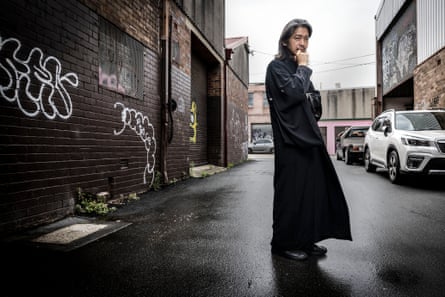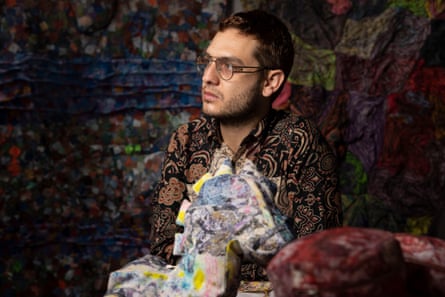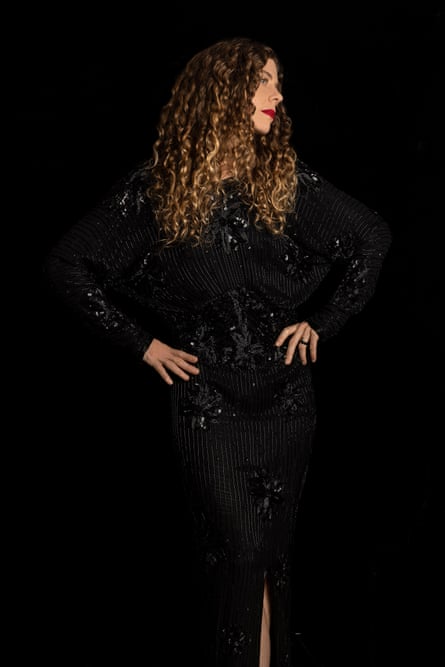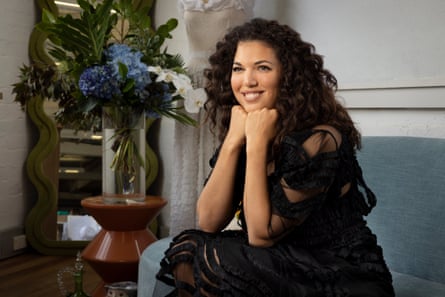
A few weeks ago at a bar, the friend I was with found a tarnished 20c coin in a glomesh purse that belonged to her grandmother. “She believed keeping money on her would attract more money,” the friend explained as she slipped it back inside.
That vintage garments give us glimpses into past lives is one of the captivating things about them. Another is the quality that distinguishes them from garments made in the past two decades. The weight and feel of dense fabrics and luxurious details: glossy silks, thick cottons, tightly knitted wool, pockets, lining, glass beads, pearls and sequins.
There was a brief period in my late teens and early 20s when it felt like these garments were in every op-shop I frequented. Well-cut skirt suits, blouses with wide shoulder pads, flapper dresses, lace slips and piles of heavy costume jewellery. Now, unfortunately, they are increasingly rare.
Finding treasure amid dusty racks squished with garments usually requires luck, patience and at least a little bit of serendipity. For five of Australia’s most talented designers, buying their favourite vintage pieces involved travel, obsession, adventure and a journey home.
Akira Isogawa
“What’s closest to my heart is something from Japan, of course,” says Akira Isogawa. “It’s a black, silk kimono. A traditional Japanese garment I found in a flea market.”
The kimono is made from Japanese silk and cost about $50. Isogawa estimates it is about 40 years old. He bought it at a market that is held on the 21st of every month at the To-ji temple in Kyoto about 20 years ago. It’s one of the two markets Isogawa visits every time he returns to Japan.
Vintage kimonos are something Isogawa often buys for inspiration or to turn into dresses, but the colour of this one meant it was different. “Because it was black and rather beautiful I thought actually, ‘Oh, there is finally something that I could wear’,” he says.
Kimonos have been worn since ancient times – according to Isogawa the shape and fabrication has not changed for centuries. The cut is so simple he describes it as an oblong shape that is sewn together without any curved lines. “No darts, no tucks, nothing,” Isogawa says. “It is hand-sewn so when you make a kimono you realise that you are not wasting even a centimetre of silk.”
Since very few people wear kimonos any more, he says wearing it makes him feel special because the garment is so unique.
Jordon Gogos

A few years before he launched his namesake label in 2021, Jordan Gogos became obsessed with the French designer Christian Lacroix who was known for bright, theatrical designs. But Christian Lacroix had been closed for a decade so if Gogos wanted to own a piece of his work, he knew it would have to be vintage.
“I literally went around for two years to every vintage store, asking ‘do you have anything by Christian Lacroix?’” he says. Finally, on a trip to Melbourne, he found something by the designer (who was incidentally also a favourite of Eddie in Ab Fab). It was a paisley print shirt with panel detailing.
“I just remember seeing the tag and being like ‘Oh my God!’,” he says. “When I shop, I don’t look at the clothes first, I look at the tags. Some people shop for silhouettes and style but I’m like ‘what designer can I find?’”
The ornateness of Lacroix’s work appeals to Gogos who is known for similarly detailed and avant garde designs. His use of motifs and the thought behind them remains a source of inspiration. “That attention to detail really transcended into my work,” he says, “I want it to have the same decadence.”
Bianca Spender
When Bianca Spender walked into Beacons Closet in Brooklyn, New York, more than 14 years ago she thought she had discovered utopia. “It was just racks and racks and rows and rows of amazing clothes and everything was under $100. They were sorted by colour and type. I think I got out maybe five or six hours later.”

It was here she found her favourite vintage piece, a beaded batwing, ankle-length gown so beautiful it inspired her to host a dapper themed party when she returned to Australia. The dress doesn’t have a designer label so it’s hard to place its age but she estimates it’s from the late 70s or early 80s.
“There are so many beads on it, of all different kinds, like long bugle beads and swallow beads,” she says. “When I put it on, it has this weight like you are wearing armour or something.”
The main fabric is a soft, airy silk that gives the dress a welcome lightness. It has three or four rows of bugle beads on the neckline and the cuff of the sleeves and around the split in the back.
“There’s this way that it kind of swishes around your ankles and melts away when you’re wearing it,” she says. “I was over the moon when I found it.”
Deni Francisco
Wirajduri designer Denni Francisco’s favourite vintage item is an Issey Miyake jacket she bought over 25 years ago and has treasured ever since. It was part of a suit from Cose Ipanema in Melbourne but unfortunately the pants have not enjoyed the same longevity as the jacket. They had Miyake’s signature pleat and were ruined by a dry cleaner who tried to press them flat. The jacket would go on to become the hero piece of Francisco’s wardrobe.

“Just about every time I wear it, somebody will comment on it,” she says. “It’s a classic, boxy kind of style that goes with anything.” The jacket was made in Japan in the synthetic fabric required for the kind of construction Miyake did that uses heat to melt materials into different shapes. It is still in perfect condition. “It isn’t even showing signs of wear,” Francisco says. “I see it lasting at least another 25 years.”
This endurance reinforces her own design philosophy of investing in quality pieces that last. “When we talk about slow fashion as opposed to fast fashion, if you were to break down the cost per wear of this piece it’s nothing really.”
Lesleigh Jermanus
The first time Lesleigh Jermanus, the creative director of Alemais, wore this vintage gown, she felt as though she was wearing a piece of history. “[I could feel] its past and the energy of those who wore it before me,” she says. “I am sentimental with design and it always brings a kind of magic when you wear vintage that is over 70 years old.”

She found it at a store called Chez Sarah on the outskirts of Paris near the Marché aux puces. “This particular vintage store is renowned for its artfully curated and high-end luxury archival selection,” she says. “I usually make sure I have had a hearty breakfast and I am well caffeinated before I go. It requires focus and energy to get through everything.”
The gown was on a dense rail and its colour obscured how detailed it was but Jermanus was drawn to the sleeve protruding out. “The construction of the sleeve is the most impressive part of the dress. It has been made with a curved arc to define the shape of the sleeve head,” she says, “When I pulled it off the rail I gasped a little.”



